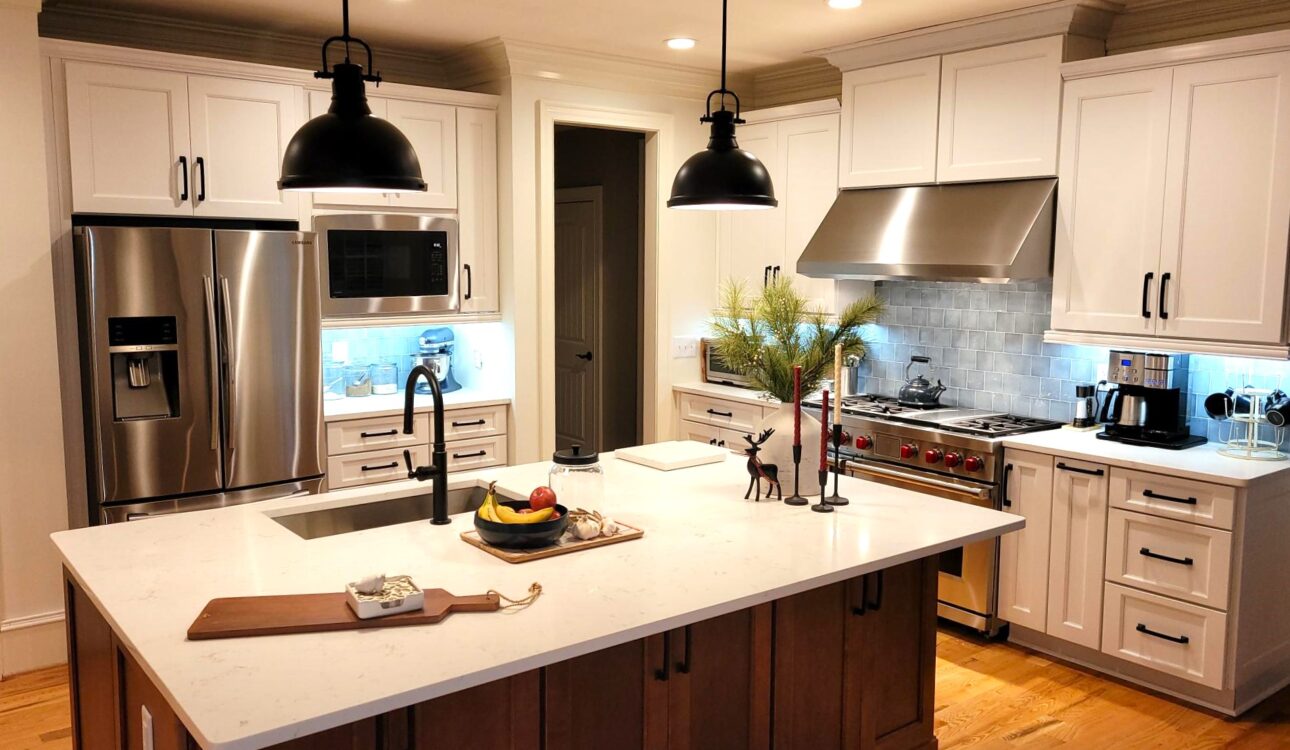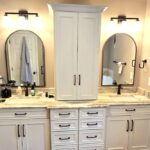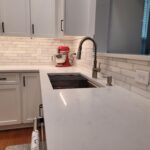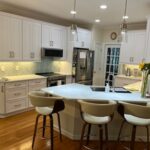Now that our owner is officially HVAC-certified on top of being a Licensed General Contractor, we are excited to tackle a common issue we solve through kitchen design in Raleigh and Wake Forest, NC: Excess Heat. Between North Carolina’s long, sweltering summers, kids constantly leaving doors ajar, and the rush of dinnertime (packed schedules and hungry bellies), the last thing you want is to feel like you’re cooking in a sauna.
But here’s the good news: with the right kitchen design decisions—and a contractor who knows airflow and ductwork inside and out—you can stay cool, efficient, and comfortable. Our region is only expected to get hotter: studies show the coming years may be the warmest on record. That means passive cooling, insulation, and ventilation strategies are more important than ever.
Here’s how smart kitchen design in Raleigh and Wake Forest, NC, controls the heat:
1. Right-Size Your Range – Bigger Can Be Cooler
Upgrading from a standard 30″ to a 36″ pro-style or dual-fuel range allows for faster cooking and less heat buildup. With more burner space and improved heat distribution, these larger ranges help food cook more efficiently—while keeping the surrounding air noticeably cooler.
Why it Matters:
Larger ranges often include high-BTU burners and convection ovens that direct heat exactly where you want it—into the food, not the room.
The Fix:
Proper hood sizing and ductwork planning are essential to handle the added airflow.
Raleigh/Wake Forest Tip:
A 36″ electric or dual-fuel model reduces ambient heat output—a game-changer during our hot, humid summers.
2. Design a High-CFM Hood & Smart Duct Layout
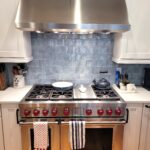 Here’s an HVAC truth: if heat isn’t evacuated, it accumulates. A high-efficiency, ducted range hood is your first line of defense. Key strategies include:
Here’s an HVAC truth: if heat isn’t evacuated, it accumulates. A high-efficiency, ducted range hood is your first line of defense. Key strategies include:
- Ducted updraft hood that matches your range size and vents outside (through a wall or roof).
- Smooth, straight ducts with minimal elbows and proper sizing to maintain strong airflow.
- Custom ventilation layouts tailored to the home’s structure.
During a kitchen remodel, ducts can be relocated or optimized for maximum performance.
3. Rebalance A/C Supply & Add Return Air
When your kitchen layout changes, your airflow should too. Otherwise, you risk hot spots and wasted energy.
- Add additional supply vents or install cabinet toe-kick diffusers to deliver cool air where you need it most.
- Include a dedicated return grille to help circulate and remove warm air effectively.
- Rebalance dampers and seal ducts to improve HVAC performance.
4. Open Up the Layout for Better Airflow
While open-concept kitchens may not be ideal for every layout, they remain a popular and practical choice for many homeowners—especially when it comes to improving airflow.
- Removing a wall improves cross-ventilation and airflow throughout the space.
- Create a more comfortable environment, even during high-use hours.
5. Choose Appliances & Cookware That Run Cooler
Appliance and cookware choices can also help make a difference in the kitchen’s temperature.
- Induction cooktops generate less ambient heat by heating the pot directly.
- Heavy-bottomed or cast iron cookware will absorb and retain heat efficiently, reducing the need for extended burner use.
Final Takeaway
With HVAC-aware kitchen design in Raleigh and Wake Forest, NC, homeowners can enjoy kitchens that are as cool and comfortable as they are functional and beautiful. Combining general contracting expertise with HVAC certification ensures every project is built with airflow, comfort, and energy efficiency in mind—from the layout to the appliances to the ductwork behind the walls.
Ready to design a kitchen that won’t leave you sweating? Contact us to talk about your next remodel—and how we can keep things cool while we build something beautiful.

